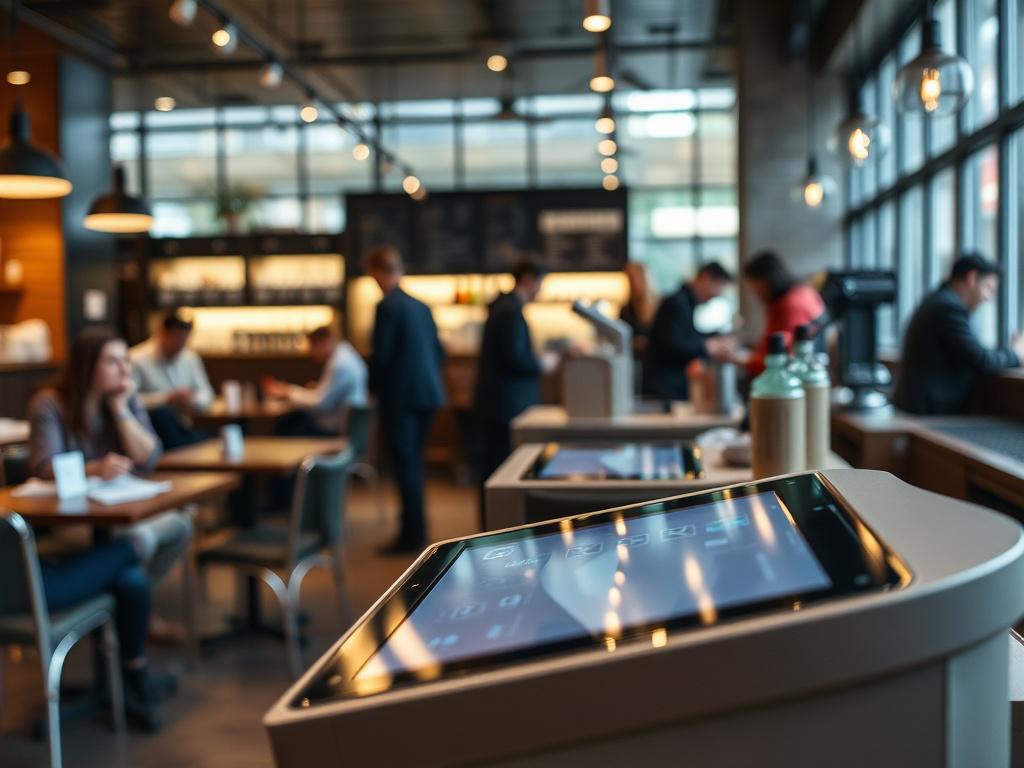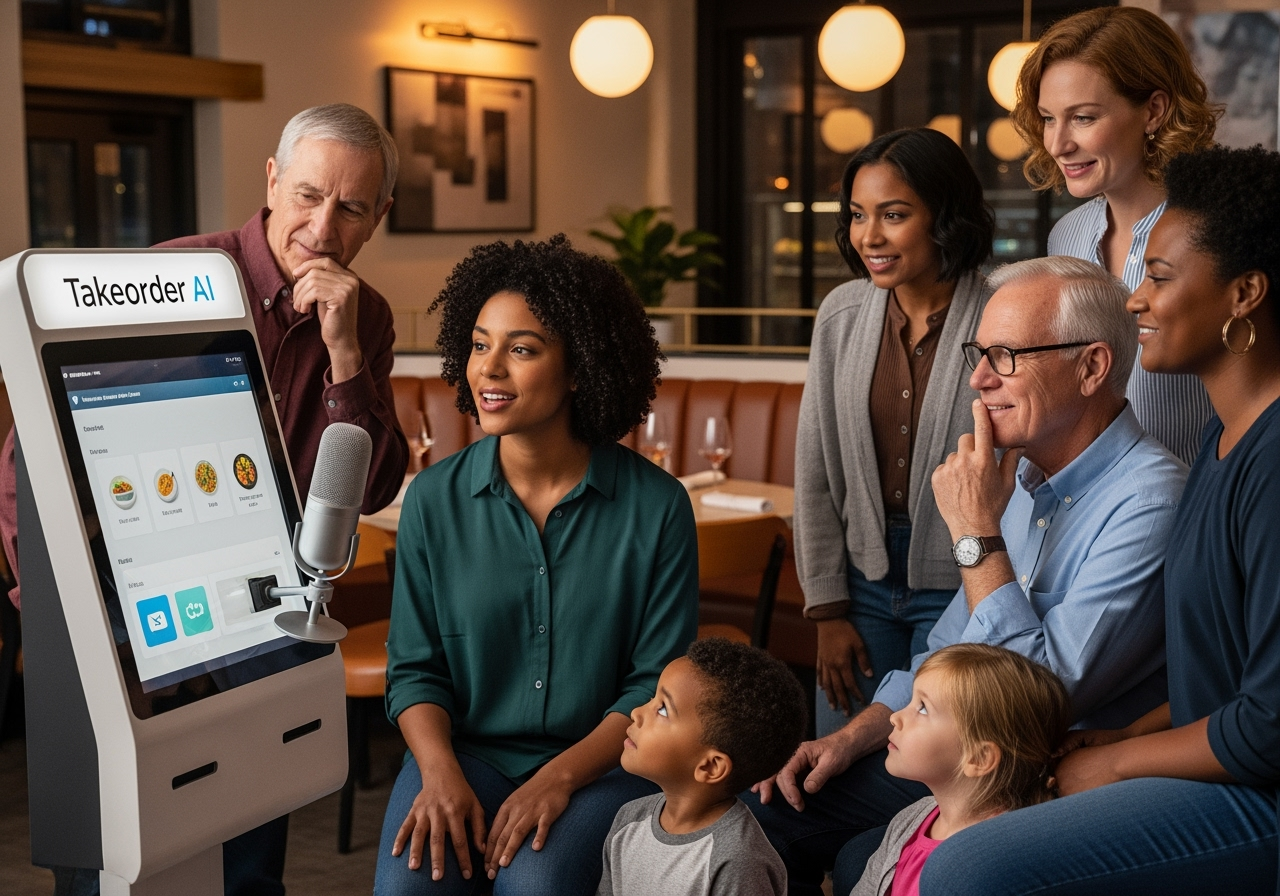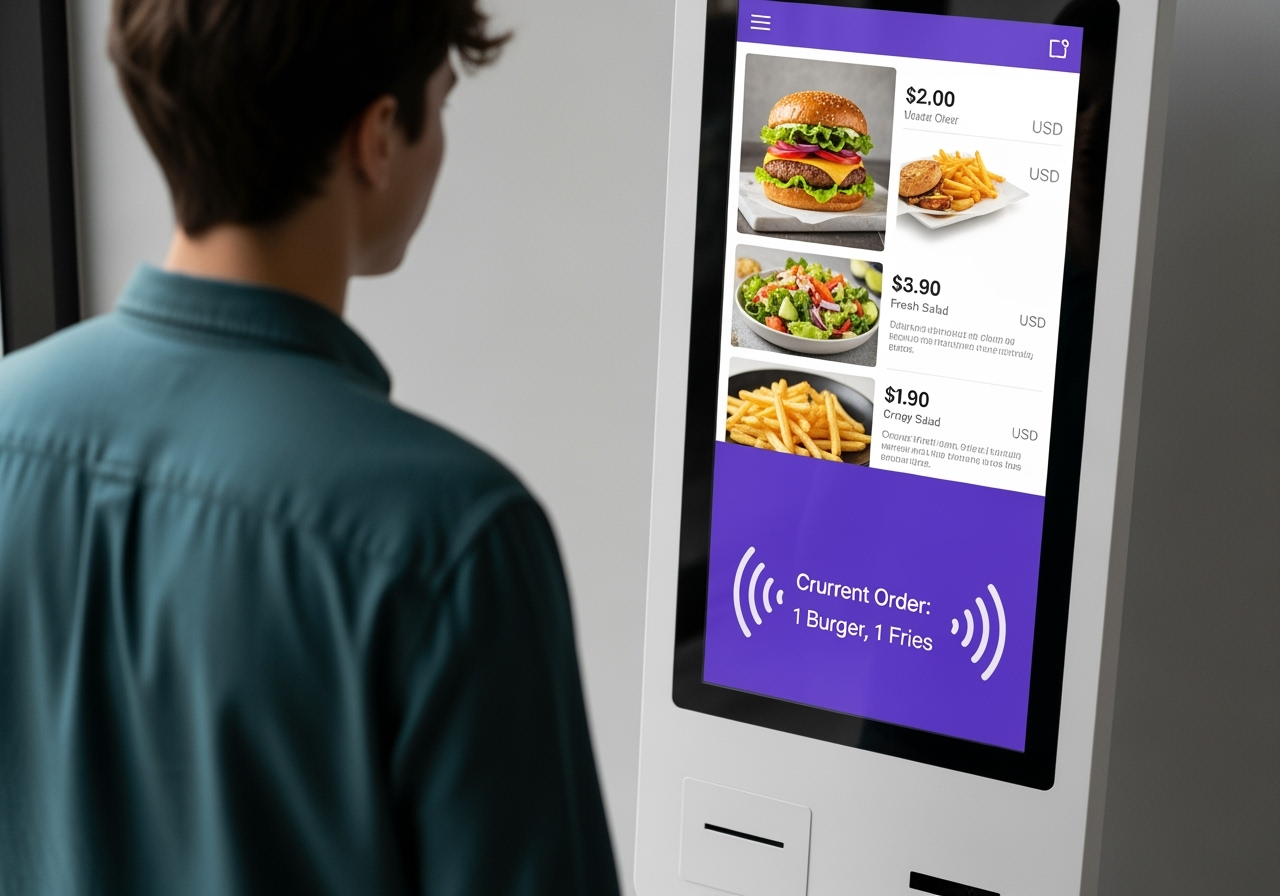
The restaurant industry is witnessing a fascinating shift. While touchscreen kiosks promised efficiency, voice-enabled ordering systems are capturing something even more valuable: customer preference.
But why are diners gravitating toward talking to machines instead of tapping screens?
Humans are hardwired for verbal communication. When customers approach a voice-enabled kiosk, they're engaging with technology in the most natural way possible – through speech. This familiarity reduces the cognitive load typically associated with navigating digital interfaces.
Unlike touchscreens that require visual scanning and precise finger movements, voice ordering mirrors everyday conversation. Customers simply say what they want, just like they would to a human server. This natural interaction eliminates the intimidation factor many feel when confronted with complex menu displays.
Surprisingly, many customers experience less anxiety when speaking to an AI system than ordering from human staff. Voice kiosks eliminate several social stressors:

This psychological safety net encourages more thorough ordering, often leading to larger ticket sizes as customers feel comfortable exploring menu options.
Voice ordering allows customers to maintain situational awareness while placing orders. Unlike touchscreens that demand visual attention, speaking to a kiosk lets diners:
This multitasking capability makes the ordering process feel less disruptive to the overall dining experience.
Voice technology naturally accommodates various accessibility needs without drawing attention to them. Customers with visual impairments, motor difficulties, or reading challenges can order independently and discreetly. The inclusive design removes barriers while maintaining dignity – a powerful psychological benefit that traditional kiosks often overlook.
Interestingly, customers often perceive voice ordering as faster, even when actual transaction times are similar to touchscreens. This perception stems from the continuous flow of conversation versus the stop-start nature of reading and selecting from visual menus.
The psychological experience of "talking through" an order feels more efficient than methodically clicking through categories and options. This perceived speed advantage significantly impacts customer satisfaction.
Voice interactions create opportunities for dynamic personalization that feel natural rather than algorithmic. When a Takeorder AI system suggests modifications or upsells through conversation, it mirrors helpful human service rather than pushy digital prompts.
Customers respond more positively to spoken suggestions because they feel like genuine recommendations rather than programmed sales tactics. This conversational approach to personalization builds trust and increases acceptance of additional items.

Speaking engages different psychological pathways than visual interaction. Voice communication triggers social bonding mechanisms, even with artificial intelligence. Customers develop a sense of connection with voice systems that they rarely experience with touchscreens.
This emotional engagement translates into:
Many customers, particularly older demographics, find voice interfaces less intimidating than complex touchscreen menus. Speaking feels familiar and accessible, while navigating digital interfaces can feel overwhelming.
Voice ordering removes the fear of "breaking something" or making mistakes that can't be easily corrected. Customers can simply speak their corrections, making the entire process feel more forgiving and user-friendly.
As restaurants continue adopting voice technology, understanding these psychological preferences becomes crucial. The success of voice kiosks isn't just about technological capability – it's about aligning with fundamental human communication preferences.
Takeorder AI's kiosk solutions recognize these psychological factors, creating ordering experiences that feel natural, comfortable, and genuinely helpful. By tapping into the psychology of voice interaction, restaurants can offer technology that customers prefer using.
The shift toward voice ordering represents more than a technological upgrade – it's a return to the conversational roots of hospitality, enhanced by AI intelligence. As this trend continues, restaurants embracing voice technology will find themselves better aligned with customer psychology and preferences.
Ready to see how voice ordering psychology can transform your restaurant experience?
Book a demo and discover the difference conversational AI makes.
Stay updated on our news and events! Sign up to receive our newsletter.
Thank you for signing up!
Something went wrong. Please try again later.